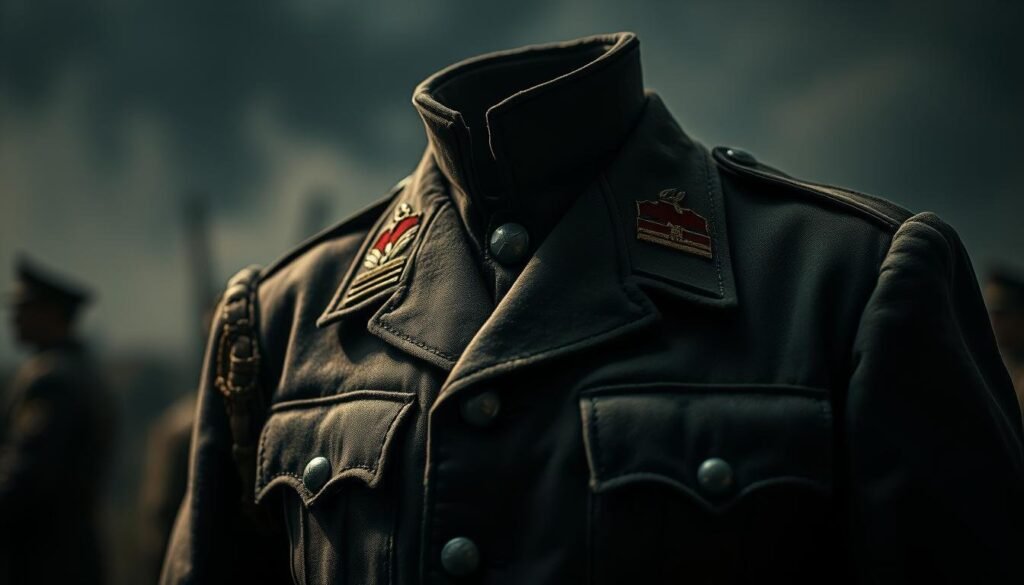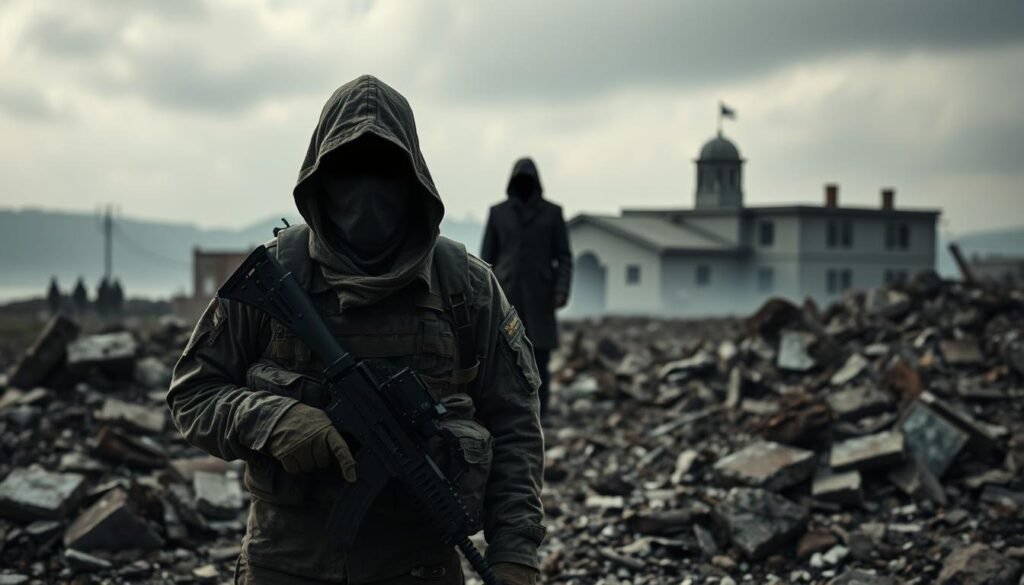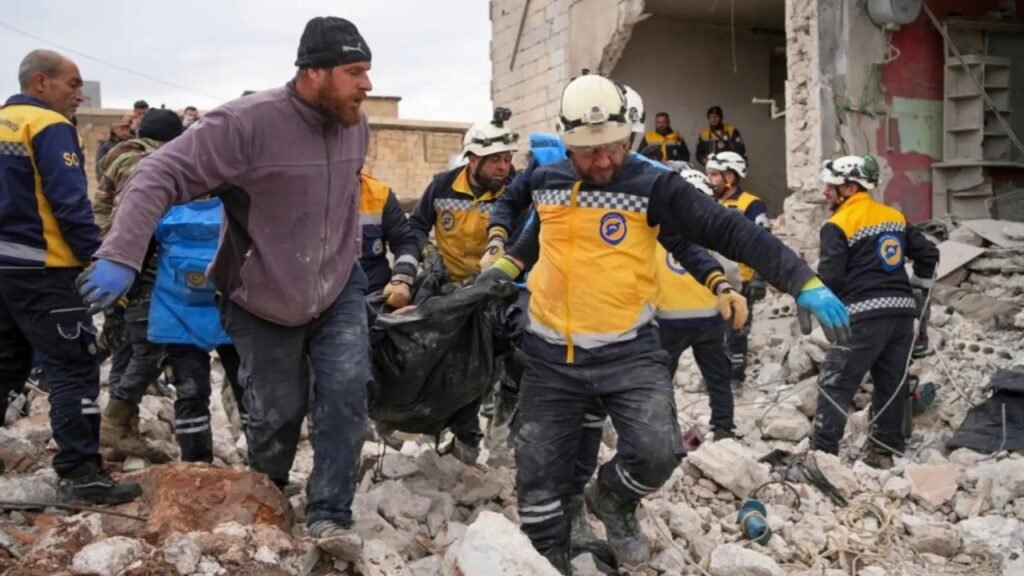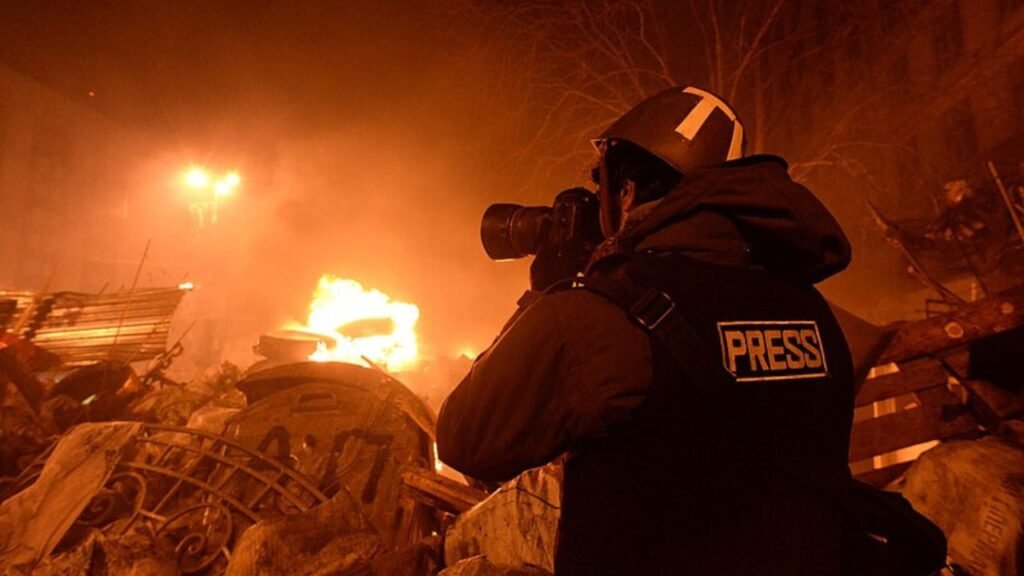Is Not Wearing a Uniform a War Crime? Have you heard about the debates on what soldiers wear in war? The question of whether not wearing a uniform constitutes a war crime is complex. It involves many different viewpoints.
The core of the debate is international humanitarian law. This law sets rules for how wars are fought and how prisoners are treated. A key rule is that soldiers must wear uniforms to be easily told apart from civilians.
As you learn more, you’ll see how history and law shape our views on war crimes. This includes the role of uniforms in identifying combatants.
Contents
- 1 The Legal Framework of War Crimes
- 2 Understanding Combatant Status in Armed Conflict
- 3 Is Not Wearing a Uniform a War Crime? Legal Analysis
- 4 Historical Cases and Precedents
- 5 Controversies and Different Perspectives
- 6 Conclusion: Is Not Wearing a Uniform a War Crime?
- 7 FAQ
- 7.1 What constitutes a war crime under international humanitarian law?
- 7.2 How do the Geneva Conventions relate to wearing uniforms during armed conflict?
- 7.3 What are the consequences for combatants who are captured without wearing a uniform?
- 7.4 Is not wearing a uniform considered a war crime in all circumstances?
- 7.5 How does the distinction principle in international humanitarian law apply to combatants?
- 7.6 What is the significance of the Hague Conventions in defining war crimes and the role of uniforms?
The Legal Framework of War Crimes
To understand if not wearing a uniform is a war crime, we must look at the laws of war. The rules about war crimes are complex. They involve many international laws and agreements.
The Geneva Conventions and the Hague Conventions are key in defining war crimes. They tell us what soldiers should do. Knowing these rules helps us understand the legal side of the issue.
The Geneva Conventions
The Geneva Conventions were made in 1949. They are a set of treaties that set standards for war and treating prisoners and civilians. They stress the need to tell soldiers apart from others, which is partly done by wearing uniforms.
The Hague Conventions
The Hague Conventions started with the Hague Peace Conferences of 1899 and 1907. They deal with war laws, like weapon use and prisoner treatment. They help shape the rules of war, including what soldiers should wear.
Looking at these conventions helps us see how international law sees uniforms. It shows how uniforms help tell soldiers from others, a key part of war crime laws.
Understanding Combatant Status in Armed Conflict
The laws of war make a big difference between who fights and who doesn’t. Knowing who is a combatant is key to following international humanitarian law. Combatants are usually soldiers who can fight in battles.
To be seen as a combatant, someone must be in a group of fighters. They should wear a uniform, carry arms openly, and follow the rules of war. The idea of combatant status is linked to the distinction principle, a main part of international humanitarian law.
Distinction Principle in International Humanitarian Law
The distinction principle says that fighters should know who is fighting and who isn’t. It also means they should only target military things, not civilian ones. This rule helps keep civilians safe.
- Distinguishing between combatants and non-combatants
- Directing operations only against military objectives
- Avoiding or minimizing incidental civilian harm
Wearing uniforms is important for showing who is a fighter. This helps follow international humanitarian law. It affects how people are treated during war.
In short, knowing who is a combatant and the distinction principle is crucial. They help make sure war is fought right and civilians are protected. These ideas are at the heart of international humanitarian law’s rules for war.
Is Not Wearing a Uniform a War Crime? Legal Analysis
Have you ever thought about if not wearing a uniform in combat is a war crime? The answer is not simple. It depends on the laws of war and the situation of each conflict.
The Geneva Conventions and their Additional Protocols set the rules for war crimes. They say that fighters must be different from civilians. This is usually done by wearing a uniform or a special sign. But, the rule about uniforms is not clear-cut and can be seen differently.
Those who don’t wear uniforms might face serious consequences if caught. They could lose their status as prisoners of war. They might also be tried for their actions by the capturing country.
Consequences for Captured Combatants Without Uniforms
Captured fighters without uniforms might deal with these issues:
- They might not get prisoner of war status.
- They could be tried for espionage or other crimes.
- They might get harsher treatment or punishment.
In summary, not wearing a uniform is not always a war crime. But, it can lead to big problems for fighters if they get caught. Knowing these legal details is key to understanding modern warfare.
Historical Cases and Precedents
Throughout history, uniforms have played a big role in conflicts. They help decide who is a combatant. This has shaped international law, especially about who is a combatant and who is not.
The Nuremberg Trials after World War II are a key example. The dress of certain groups was examined to see if they were combatants. This showed how hard it is to apply war laws to people who don’t look like soldiers.

The French Resistance in World War II is another important case. Members often didn’t wear uniforms, causing debates about their combatant status. This case has helped shape ongoing discussions about who is considered a combatant.
These cases show uniforms are a big issue in warfare. They affect how war crimes are seen and handled. Knowing about these cases helps us understand modern warfare and its laws better.
Controversies and Different Perspectives
The debate on wearing uniforms in armed conflicts is intense. It involves many viewpoints on its legal standing. You’re about to see how this debate affects everyone involved.
At the heart of the controversies is how uniforms define who is a combatant. Some believe uniforms are key to knowing who to target. They say it helps follow the rules of war.
But, the reality of modern war is different. Groups without uniforms challenge these rules. Experts think the need for uniforms depends on the conflict’s nature.
The different perspectives show how hard it is to apply international law in today’s wars. This debate goes beyond uniforms. It touches on the heart of war laws and their relevance today.
Getting to the bottom of these controversies and different perspectives is key. It helps us understand what makes a war crime. This knowledge is vital for those working with war laws.
Conclusion: Is Not Wearing a Uniform a War Crime?
You’ve looked into whether not wearing a uniform is a war crime. The laws of war crimes, found in international humanitarian law, help us understand this.
Looking at who is a combatant and the rules for uniforms in war shows us why uniforms matter. Past cases show uniforms help figure out who is fighting.
In short, not wearing a uniform isn’t always a war crime. But, it can cause confusion and might break rules about who to target. This shows uniforms are key in war crimes and international law.
See Also: Is It a Crime to Hire Undocumented Workers?
FAQ
What constitutes a war crime under international humanitarian law?
War crimes are serious violations of international law. They include acts like willful killing, torture, and taking hostages. The Geneva and Hague Conventions define these crimes.
How do the Geneva Conventions relate to wearing uniforms during armed conflict?
The Geneva Conventions say combatants must show they are not civilians. They do this by wearing a uniform or a distinctive sign. This is key for following international humanitarian law.
What are the consequences for combatants who are captured without wearing a uniform?
Those captured without a uniform might be seen as spies or saboteurs. They could face trial and punishment under the law of the detaining power. They might not get prisoner-of-war status.
Is not wearing a uniform considered a war crime in all circumstances?
Not wearing a uniform is not always a war crime. But, it can lead to losing prisoner-of-war status and other legal issues if caught. The situation and context matter a lot.
How does the distinction principle in international humanitarian law apply to combatants?
The distinction principle means combatants must be different from civilians. This ensures military actions only target legitimate military targets. Wearing a uniform helps with this.
What is the significance of the Hague Conventions in defining war crimes and the role of uniforms?
The Hague Conventions, along with the Geneva Conventions, are the base of international humanitarian law. They set rules for war and the treatment of those involved, including the importance of uniforms.




